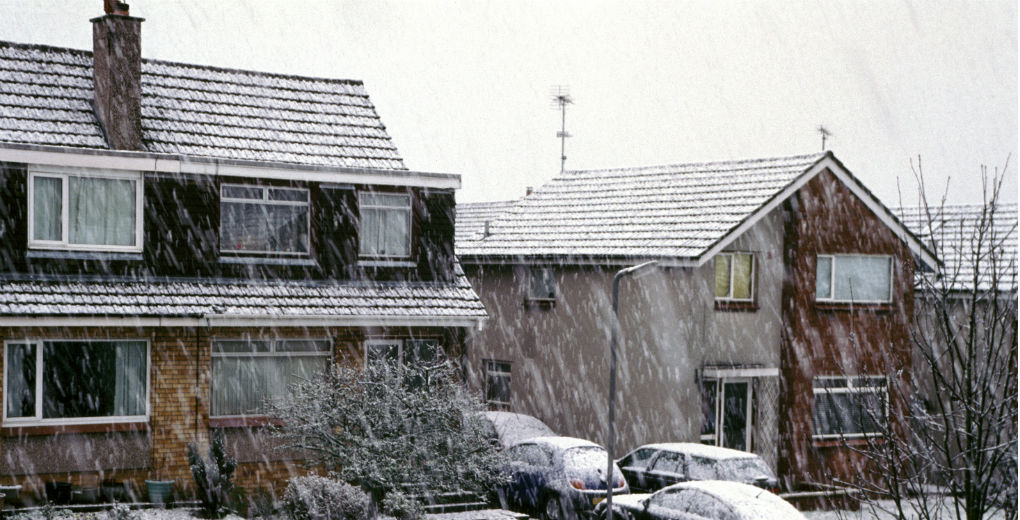Be prepared… preparing property for snow!
Temperatures are due to plummet, take action now and protect your property.
Our top 5 things to check…
- Pipes
- Roof
- Guttering
- Boiler
- Radiators
Understanding the risk
Every winter millions of pounds of damage are experienced by businesses and households from burst pipes, roof snow collapses and water ingress. However by taking some basic precautions and planning ahead, many incidents can be prevented or the effects of damage minimised.
Preventing burst pipes
- Protect pipes and tanks with good quality lagging to BS6700.
- Repair dripping taps & faulty ball valves as they can cause waste pipes to freeze.
- For unoccupied buildings or those with a history of freezing incidents, leave the heating set at a low level, or drain all equipment that is susceptible to condensation or freezing.
- Install a frost stat to central heating and check it is working correctly.
- Arrange for premises to be inspected at least daily in periods of very cold weather.
- Service heating systems at least annually.
- Ensure all boilers are safeguarded against freeze – particularly drain and condensate lines.
- Drain down all idle boilers.
Preparedness
- Ensure that you know the layout and routes of all water, gas and electricity services within the premises and that this information is recorded and available.
- Know the location of all main and subsidiary stop-taps and ensure they are fully operational.
- Research the details of reliable local plumbing contractors and keep their contact details available.
Minimising damage
- Isolate water at stop cock. Turn on cold taps to drain the system as quickly as possible.
- Turn off the central heating.
- Protect or remove any vulnerable contents or equipment that may be damaged.
- Never use naked flames to thaw ice plugged pipes and equipment.
- ‘Ice dams’ can be created on the edges of roofs, especially tiled roofs by the continual thawing and refreezing of melting snow. Water may ‘back up’ up the roof getting under the tiles and leaking into the building. To help prevent this keep drains open and free of ice in a safe manner. Engage specialist companies to perform this if necessary.
- Monitor the amount of snow on roofs and clear them before accumulations reach unsafe levels.
For the home…
Here’s some other tips on preparing the home for winter…
- Reduce drafts – look for small gaps around windows, fireplaces and TV and telephone wires where cold air could be coming through and seal these.
- Keep your gutters clear – regularly clear away any leaves located near gutters to prevent them from falling into the drain pipe and blocking them.
- Check the roof – have any broken or missing tiles or slates replaced and other damage repaired. It is especially important to check flat roofs, which generally need re-covering every five to ten years. Keeping the rain out is one of the most important things you can do.
- Deter burglars – Make sure you draw your curtains during the evening so that you don’t let potential burglars see what you have in your home when the lights are on.
- Use a light timer – If you are going to be away for an extended period use a timer to set your lights to come on at certain times each day to make it look like someone is at home.
- Sweep your chimneys – If your chimneys are in use, make sure that they get swept every year. This will remove the build-up of dirt and grime from your chimney walls and prevent soot escaping.
For the business…
Here’s some other tips to consider when preparing your business for the winter months:
- Fit security lights – Fit security lighting that points at your door or your window to brighten dark areas that burglars may take advantage of. Sprinkler systems
- For all sprinkler systems engage sprinkler contractors to make systems ‘winter safe’.
- Especially vulnerable are systems protecting outdoor areas or cold areas (attics etc), valve chambers, and pump rooms.
- Heating should be maintained at all times at or above 4 degrees C. Exposed pipe work should be trace heated and lagged, and this must be routinely inspected and maintained.

